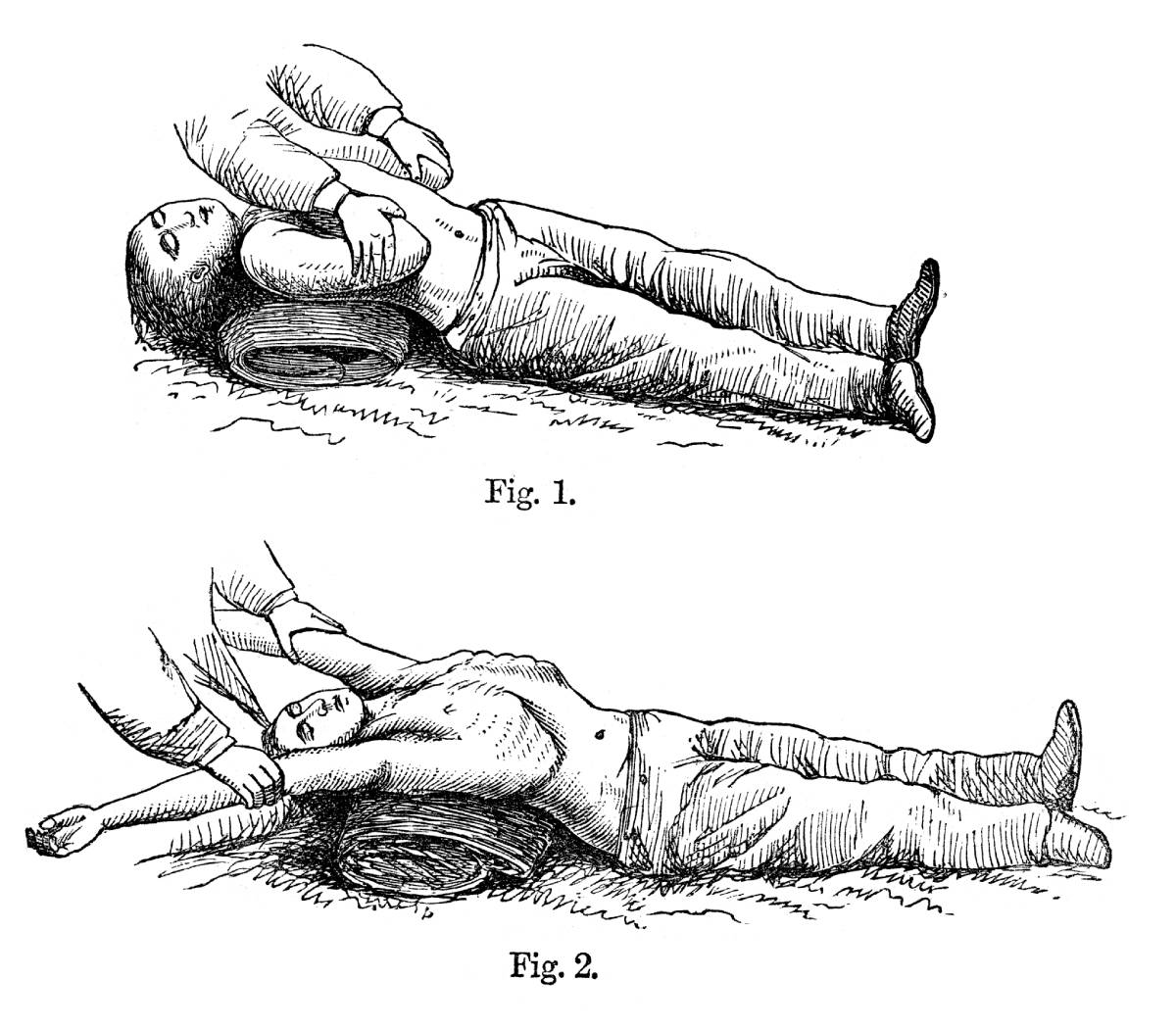History of CPR

Cardiopulmonary resuscitation (CPR) is an emergency procedure used on individuals who are undergoing cardiac arrest or respiratory failure. While CPR as a method is a relatively recent medical innovation, attempts at resuscitation date back to the second century, when the Greek physician Galen first recorded his efforts to inflate a dead animal’s lungs using bellows (1). Methods of resuscitation continued to develop throughout history with varying success – in the 1500s, strategies included whipping the unconscious person or rolling them repeatedly over a barrel – ultimately resulting in modern CPR (2).
Artificial respiration did not truly see the light, however, until the 16th century with Vesalius’s work on living animals (1). In the early 1700s, assisted breathing was then used in its close –to- modern form for the first time by a Scottish surgeon, Dr. Tossach, in an attempt to revive a drowning victim. This was an important development in the history of CPR.
In the 19th century, a number of techniques were further developed. These incorporated mouth-to-mouth resuscitation, chest compressions, and electrical shocks.
However, it was not until the mid-20th century that CPR techniques were developed in their true, modern form. Indeed, while cardiac massage had begun in 1874, with the open chest method gaining traction, it was not until 1960 that, following the demonstration of its greater ease of implementation and comparable outcomes, chest cardiac massage was established as the new gold standard for CPR (1), After this, the American Heart Association began promoting a technique combining chest compressions and artificial respiration, known, as it remains to this day, as mouth-to-mouth resuscitation. The year 1960 also saw the publication of a landmark paper by Kouwenhoven, writing that “anyone, anywhere can initiate cardiac resuscitation procedures”. As Kouwenhove had formulated it, “all that is needed are two hands” (3). That year remains a key moment in the history of CPR.
In the 1970s, the American Heart Association began to advocate for a new resuscitation technique that used chest compressions alone, without artificial respiration. This technique, or cardiocerebral resuscitation (CCR), was found to outperform traditional CPR in the context of out-of-hospital cardiac arrests.
The American Heart Association published a seminal paper in Circulation, “Resuscitation Education Science: Educational Strategies to Improve Outcomes from Cardiac Arrest”. Its statement, which is applicable to all resuscitation training programs, not ejust those of the American Heart Association, assesses best practices in education to apply them to a resuscitation context. By implementing the statement’s guidance, training programs and resuscitation instructors increase cardiac arrest survival rates in addition to the general standard of patient care (4).
Since its inception, CPR has continued to evolve, with new techniques and technologies being developed to improve its effectiveness on a regular basis. It also continues to gain traction in the form of lay rescuer CPR trainings, reaching a broader and broader audience (5). Today, CPR continues to be widely used around the world and has saved countless lives. (6).
References
1. DeBard ML. The history of cardiopulmonary resuscitation. Ann Emerg Med. 1980;9(5):273–5. doi: 10.1016/s0196-0644(80)80389-1
2. The Evolution of CPR Infographic | CareerCert [Internet]. [cited 2023 Mar 16]. Available from: https://www.careercert.com/articles/emergency-life-support/evolution-of-cpr/
3. Hurt R. Modern cardiopulmonary resuscitation—not so new after all. J R Soc Med. 2005;98(7):327. doi: 10.1258/jrsm.98.7.327
4. History of CPR | American Heart Association CPR & First Aid [Internet]. [cited 2023 Mar 16]. Available from: https://cpr.heart.org/en/resources/history-of-cpr
5. Toft LEB, Richie J, Wright JM, Amraotkar A, Katrapati P, Fulmer S, et al. A New Era of Lay Rescuer CPR Training: An Interactive Approach for Engaging High Schoolers. J Am Coll Cardiol. 2022 Dec 6;80(23):2251–3.
6. A Brief History of Resuscitation After Cardiac Arrest | NYU Langone Health [Internet]. [cited 2023 Mar 16]. Available from: https://med.nyu.edu/research/parnia-lab/cardiac-arrest-death/brief-history-resuscitation-cardiac-arrest
